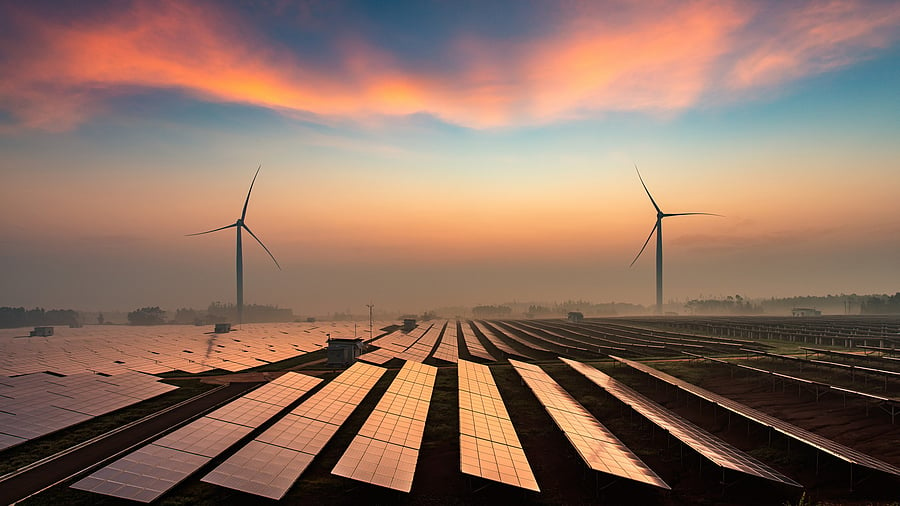
Image for representation.
Credit: iStock Photo
A goal to triple global renewable energy capacity by 2030 and cut fossil fuel use is within reach, the International Energy Agency said in a report on Tuesday, but will require a huge push to unlock bottlenecks such as permitting and grid connections.
The report comes as leaders from government and business come together at New York Climate week to try to drive forward action against climate change.
Almost 200 countries at the COP 28 climate summit in Dubai last year agreed to reach net zero emissions from the energy sector by 2050 and pledged to triple renewable energy capacity like wind and solar.
The IEA said the renewable energy goal "is within reach thanks to favourable economics, ample manufacturing potential and strong policies," but said more renewable capacity by itself would not slash fossil fuel use and reduce costs for consumers.
“To unlock the full benefits of the tripling goal, countries need to make a concerted push to build and modernise 25 million kilometres of electricity grids by 2030... The world would also need 1,500 gigawatts (GW) of energy storage capacity by 2030,” the IEA said.
Countries at COP 28 also pledged to double energy efficiency measures to help curb power use, but this target will require governments to make efficiency much more of a policy priority.
Countries must embed the renewable and energy efficiency goals in their national plans to meet goals set under the Paris climate agreement, the IEA said.
Emissions from the global energy sector hit a record high last year.
Tripling renewable energy capacity and doubling energy efficiency measures to reduce power use could reduced global greenhouse gas emissions by 10 billion metric tons by the end of the decade compared with what is otherwise expected, the report said.
Battery storage, grids needed to deliver UN goal to triple renewable energy: IEA
Delivering on a goal set at last year's COP28 climate summit to triple renewable energy capacity by 2030 is feasible, but countries need to move quickly to deploy more electric grid connections and battery storage, according to the International Energy Agency.
An IEA report released on Tuesday said favorable economics, "ample" manufacturing potential and policies make the goal achievable. But in order to fully execute, it said countries need to build 25 million km (15.5 million miles) of transmission lines and add 1,500 gigawatts (GW) of energy storage capacity by 2030, a 15-fold increase on today's level.